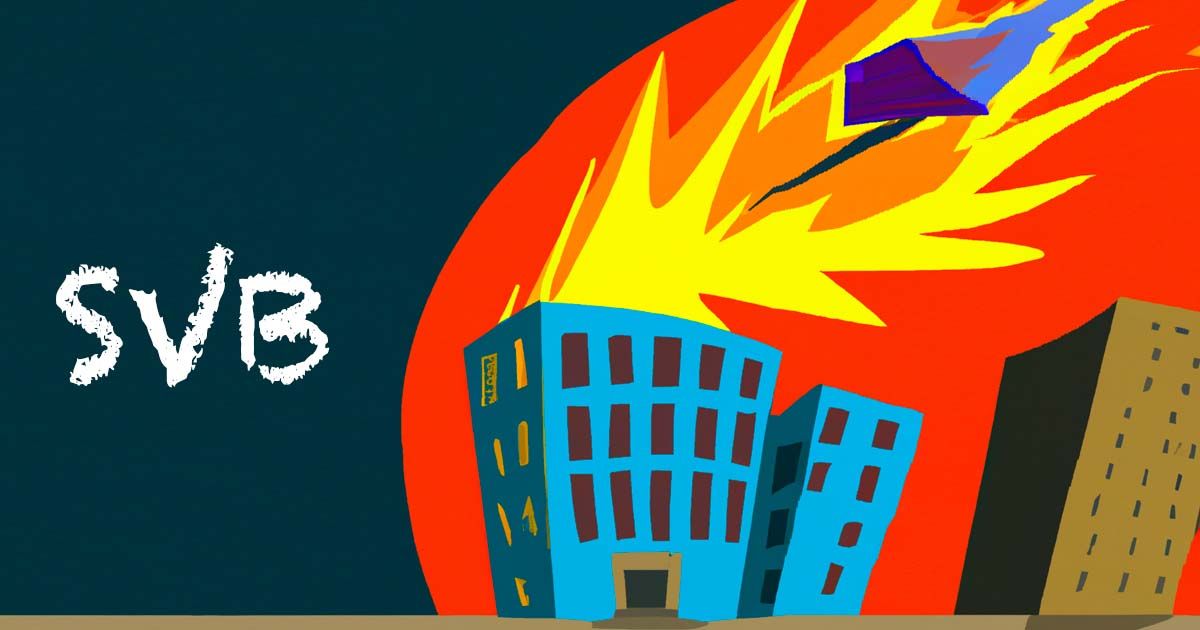Silicon Valley Bank Failure and How to Protect Yourself
The SVB collapse is the worse banking crisis in more than a decade.

Between March 10 and 13, 2023, the Silicon Valley Bank (SVB) and Signature Bank collapsed despite holding a combined $327 billion in assets.
The problem started with SVB, which found itself in a liquidity crisis. The bank was heavily invested in U.S. Treasury notes, had venture-backed start-ups and tech companies as its customers, and was much more exposed to fluctuations in interest rates than a typical bank.
Inflation Made SVB Assets Worth Less
Inflation became a double whammy for SVB. On the one hand, its customers —the aforementioned tech firms— started to need more money. As inflation increased, these tech companies needed to draw down cash to keep making payroll. Thus SVB had to sell some $21 billion in assets to keep up with deposits.
Unfortunately, the assets SVB had were most U.S. Treasury Bonds that SVB purchased when inflation was much lower. Thus, the bank lost about $1.8 billion.
Concerned depositors started to pull out money, and in just a couple of days, SVB was done.
Signature Back failed shortly thereafter when its depositors withdrew about $10 billion in what might have been panic.
Marko Zlatic, the host of White Board Finance, did a masterful job explaining all of this on his YouTube channel. It is well worth the 25 minutes it takes to watch.
Banking Crisis
So now that we have a basic understanding of what happened. What are some of the concerns?
If consumers lose trust in the banking system, it can have significant consequences for both individuals and the economy as a whole.
- Reduced Deposits — Consumers may choose to keep their money outside the banking system, such as in cash or alternative investments, which could reduce bank deposits. This, in turn, could limit the amount of funds available for lending and investment by banks.
- Reduced Economic Activity — A lack of trust in the banking system could lead to decreased economic activity as consumers and businesses become more cautious about their spending and investment decisions. This could lead to a slowdown in economic growth and potentially even a recession. (On top of the recession we are experiencing now.)
- Bank Runs — In extreme cases, a loss of trust in the banking system could lead to bank runs, where large numbers of customers attempt to withdraw their deposits simultaneously. This could lead to liquidity problems for banks and potentially even bank failures.
- Increased Costs for Consumers — Banks may need to increase fees or interest rates on loans to maintain profitability if they face increased regulatory costs or reduced deposits. This could result in higher costs for consumers and businesses who rely on banking services.
It is worth mentioning here that the Biden administration has —at the time of writing— mostly defused this situation by promising to protect all depositors at SVG, including those with account balances above the FDIC statutory limit of $250,000. Thus, individuals and businesses who have money in SVG will be able to access those funds.
Keep Your Assets Safe
Bank collapses should make you think about your personal assets and how you can keep them safe. There are some things you can do right now that will put you in a relatively better position should inflation and banking issues persist.
- Stay Calm — Panicking and taking your money out of the bank to stuff it in a shoebox will only make things worse.
- Diversify Your Assets — Instead of relying solely on the banking system, consider diversifying your assets by investing in other types of assets, such as stocks, bonds, precious metals, or real estate. This can help protect your finances from potential disruptions in the banking system.
- Keep Cash on Hand — While keeping large amounts of cash at home can be risky, having a small amount on hand can be helpful in case of emergencies or disruptions to the banking system. Just be sure to keep it in a safe and secure location. At SVG, for example, some customers could not access their accounts over the weekend, so a little cash on hand would have helped.
- Use Multiple Banks — Remember that the FDIC limit is $250,000, so if you have more than that, consider putting it into a few different banks. Do not permit any individual account to have more than the insured limit. Even if you have less than $250,000 having funds in a few banks can help in the case of minor disruptions.
